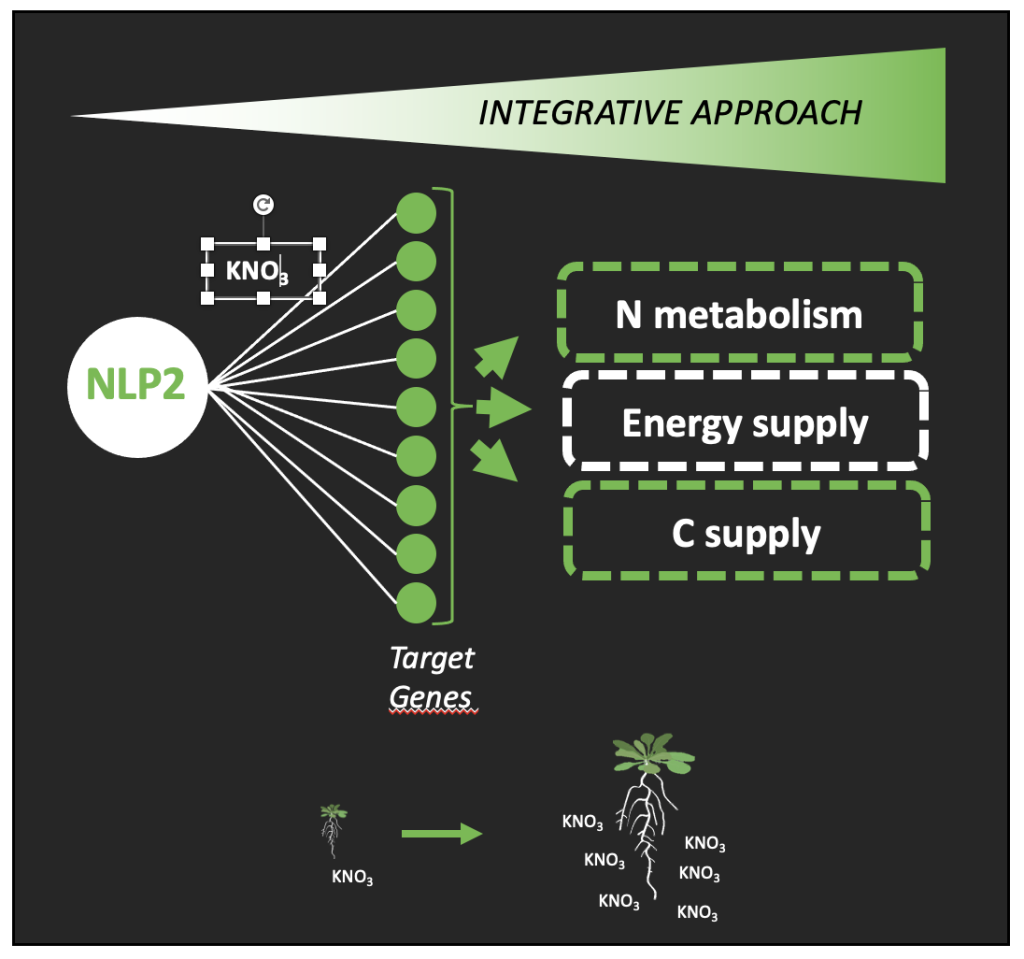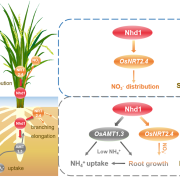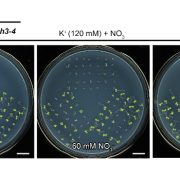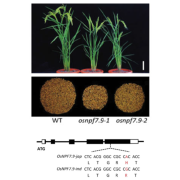Top-tier transcription factor AtNLP2: When nitrogen meets carbon and energy
Durand et al. explore the role of an NLP transcription factor in the plant nitrate response.
By Mickaël Durand 1,2,3 and Anne Krapp1
1 Université Paris-Saclay, INRAE, AgroParisTech, Institut Jean-Pierre Bourgin, 78000, Versailles, France
2 Université de Poitiers, UMR CNRS 7267, EBI Ecologie et Biologie des Interactions, Poitiers, France.
3 present adress: Biomolécules et Biotechnologies Végétales, EA2106, Université de Tours, France

Top-tier transcription factor AtNLP2: When nitrogen meets carbon and energy
Background: Plants detect and adapt quickly to fluctuating environmental conditions such as variations in nutrient availability. Nitrogen is an essential element for plant growth and productivity and a major limiting factor of plant growth. Growth and yield are determined by interactions between carbon and nitrogen metabolic pathways. Nitrate, the nitrogen source mainly absorbed and used by plants, also functions as a signal that adjusts plant development and metabolism to nitrate availability in the soil. The regulatory networks and key molecular players involved in nitrate signaling, particularly those orchestrating several metabolic pathways, are prime targets for improving nitrogen use efficiency, while minimizing pollution and enhancing sustainability. NLP transcription factors are the main regulatory players for plant responses to N availability. In Arabidopsis, besides the nitrate sensor and master regulator NLP7, NLP2 was suggested as an additional main actor.
Question: What is the regulatory network orchestrated by NLP2 and how do NLP2 and NLP7 work together to achieve the plant nitrate response? Our main interest was to obtain an integrative view of how the loss of NLP2 affects plant metabolism and growth.
Findings: We found that NLP2 orchestrates nitrogen assimilation and metabolic pathways that ensure carbon skeleton and energy supply in response to soil nitrate availability. Our results highlight the complementarity and specificity of two NLP family transcription factors in orchestrating a multilevel nitrate regulatory network, thus linking nitrate assimilation to carbon and energy metabolism for efficient nitrogen use and biomass production.

Wild-type Arabidopsis rosettes grown under high and low nitrate supply, respectively.
Next steps: Obtaining further insight into the molecular mechanism of NLP2 action, determining the impact of NLP2/NLP7 homo- or heterodimer complexes on transcriptional regulation at the whole-plant and single-cell level, and modifying NLP2/7-dependent nitrate signalling to improve nitrogen use efficiency in crops are future research goals.
Mickaël Durand, Virginie Brehaut, Gilles Clement, Zsolt Kelemen, Julien Macé, Regina Feil , Garry Duville, Alexandra Launay-Avon, Christine Paysant-Le Roux, John E. Lunn, François Roudier, Anne Krapp. (2023). The Arabidopsis transcription factor NLP2 regulates early nitrate responses and integrates nitrate assimilation with energy and carbon skeleton supply. https://doi.org/10.1093/plcell/koad025






